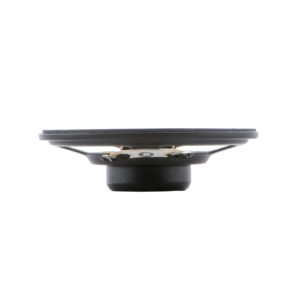How can we help you?
Back-Up Alarms
- May 11, 2020
- Loudspeakers
Back-up alarms, also known as back up beepers, are used in vehicles with an obstructed rear view to help warn passers-by when the vehicles are moving backward. The first back-up alarm was invented and manufactured by a Japanese company called Yamaguchi Electric in 1963. Although today, there is not an international standard for back-up alarms, most countries now have workplace safety and health regulations that require audible alarms on motor vehicle equipment. The alarms must be distinguishable from the surrounding noise level and equipped on motor vehicles that have a limited rear view, such as heavy trucks, construction vehicles‚ forklifts and many other applications.
Conventional back-up alarms usually produce a pure tone known as the “beep-beep” signal. This is mainly because a single frequency sound is easily detected under noisy conditions and not easily attenuated during transmission. From a perception point of view, it also conveys a higher level of emergency than other type of signals with the same loudness. To be heard over various background noises, typically the alarm signal volume would be 97-112 decibels. However, considering the long-term hearing loss limit of 80 decibels, some people have questioned if such a volume is safe enough for the workers nearby. Furthermore, because of the long-distance travel capability, the beep signal could still be heard far away from the danger zone, so it becomes the top complained about noise pollution source in many cities.
In order to solve the issues with the tonal signal, new backup alarm products using broadband noise signal have been developed and are becoming more and more common (listen to the broadband noise signal, “More B.C. businesses are replacing the beep-beep-beep with a ‘white noise’ vehicle back-up alarm”, WorkSafeBC News & Events, December 15, 2016 ). Compared to the tonal signal, the broadband noise signal is much less intrusive by nature and easy to be merged to background noise at lesser distance. With the same loudness perception, broadband noise signal volume could be set at a lower level than a tonal signal. It also can provide more uniform sound field in the back side of the vehicle, which to some extent compensates the less detectability and perceived urgency than the tonal signal. Another advantage for using a broadband signal is, it is easier for people to localize the alarm source position (front or back). This is critical in a real work environment, as direction confusion could lead to a vital accident.
Overall each type of signal has its pros and cons. It is suggested to choose suitable backup alarm products according to the real environmental conditions.
Stetron offers speakers for backup alarm products both with tonal signal and broadband signal. Contact us today for more detailed information.

Stetron has speakers for backup alarm products both with tonal signal and broadband signal. Contact us today for more detail information.
 Log In
Log In Register
Register Favorites
Favorites